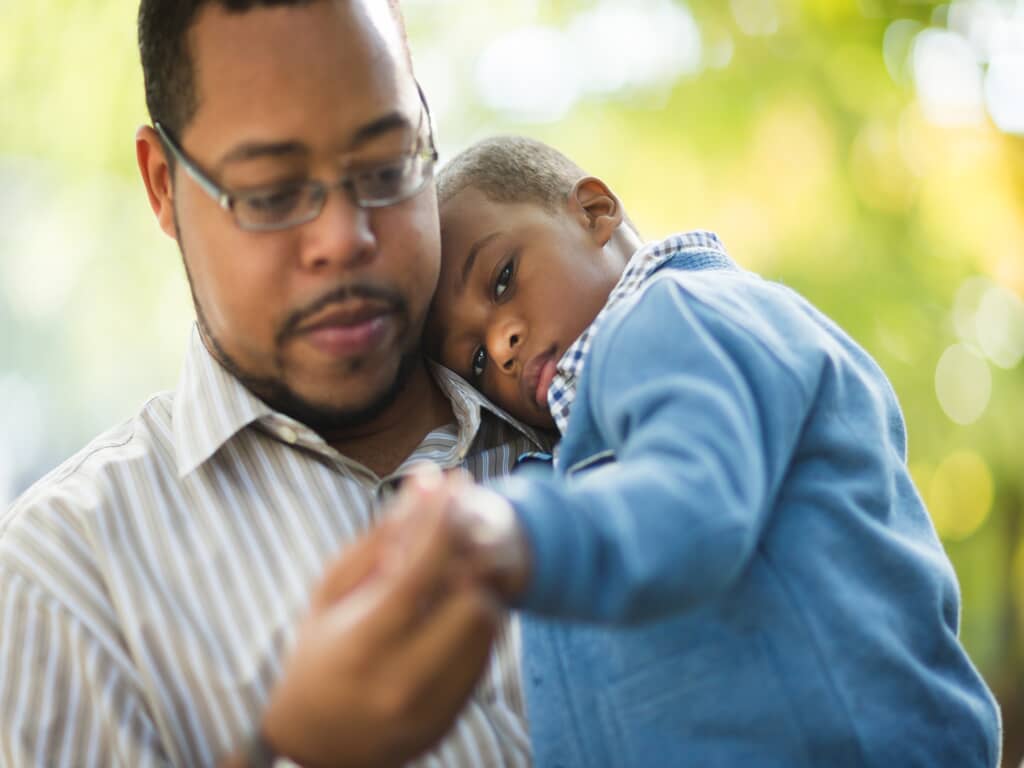Five signs a grieving child or adolescent may need extra help
- Category: Mental Health
- Posted on:
- Written By: Dr. Julie Kaplow, Executive Director, Trauma and Grief Center at Children’s Hospital New Orleans

There is no “right or wrong” way to grieve, and every child expresses their grief differently. However, there are times when youth feel especially “stuck” in their grief and need additional support.
While most grief reactions are a natural reflection of the love we had for the person who died, concerned caregivers often want to know how to identify if and when their grieving child may need a higher level of support.
Here are five signs to look for:
- Significant developmental regressions
- Extreme separation distress
- Excessive preoccupation with the circumstances of the death
- Avoidance and numbing
- Risk-taking behaviors
Developmental regressions, seen more frequently in younger children, can involve major changes in sleeping, language, or eating habits, which can have a major impact on daily functioning. This can also include the inability to separate from adult caregivers.
What caregivers might observe: Trouble sleeping, not eating, climbing into parent’s bed every night, excessive clinginess, or tearfulness upon separation.
Extreme separation distress can include missing the deceased person so much that they can’t get out of bed in the morning, attend school, or complete daily activities.
What caregivers might observe: Going to sleep crying, waking up crying, excessive tiredness, or lack of motivation to do things they used to enjoy doing.
Extreme preoccupation with the circumstances of the death can include excessive worrying and concerns about the way the person died or even shame or guilt that they were somehow responsible.
What caregivers might observe: Ongoing questions regarding how the person died, wanting to keep returning to the place where they died, or expressions of guilt or remorse.
Avoidance and numbing behavior can include staying away from people, places, or things that remind them of the person or the way the person died.
What caregivers might observe: Emotionally flat (appearing like they don’t have any feelings at all), distress when the person’s name is mentioned, physically avoiding things that remind them of the person or the death itself.
Risk-taking behavior, which is more likely to appear in adolescents, can include engaging in activities that are dangerous or reckless, such as substance abuse, drunk-driving, or even violent behavior.
What caregivers might observe: Social withdrawal from family, engaging with risk-taking peers, irritability and/or aggression, or self-harming behaviors.
Again, every child grieves differently, and there is no set timeline for grief. But if any of these behaviors are (1) present after six months post-death and (2) are impacting daily functioning or (3) include expressions of self-harm or suicidal thoughts, we would encourage caregivers to have the child evaluated by a mental health professional who is well-versed in childhood grief.
To learn more about bereavement and grief in children or to explore treatment options within the Trauma and Grief Center at Children’s Hospital New Orleans, please visit our website at chnola.org/traumaandgrief.
If you would like to refer a child to the Trauma and Grief Center, please call 504.896.7797.
.jpg)
Julie Kaplow, Ph.D., ABPP, is executive director of The Trauma and Grief Center (TAG) Center at Children’s Hospital New Orleans and executive director of The TAG Center at The Hackett Center for Mental Health in Houston, TX. The overarching mission of each of the TAG Centers is to raise the standard of care and increase access to best practice care among youth who have experienced trauma and bereavement.



